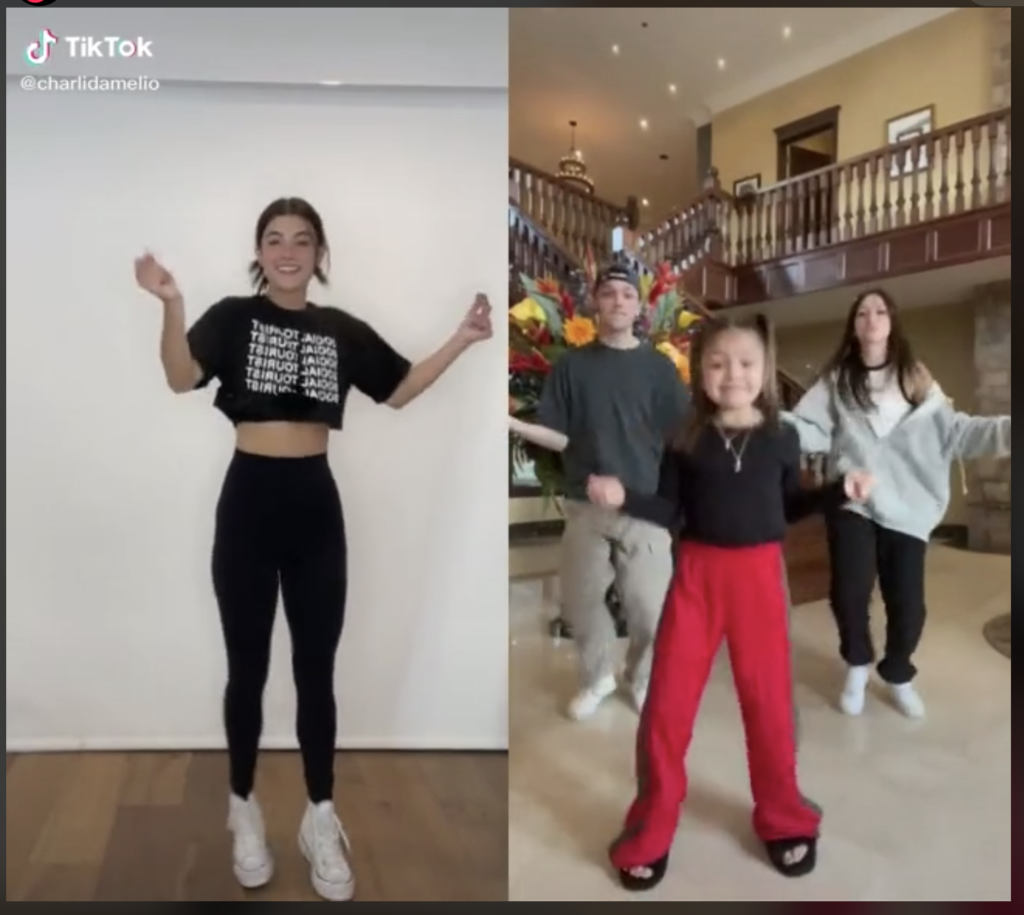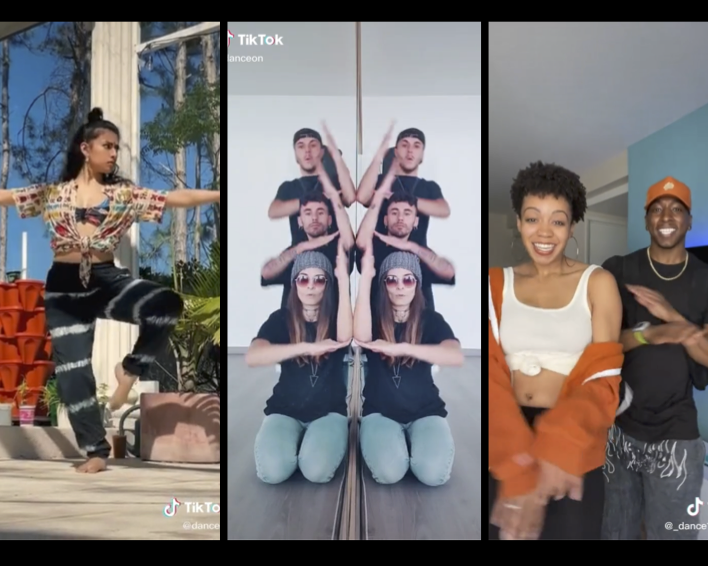After a long day of classes, Bella Pansera ‘23 just wants to get into bed and relax. She soon finds herself scrolling through the endless “for you” page on TikTok where every video is different but it all somehow fits into what she’s in the mood to see. From Harry Styles videos to astrology to dancing and back to astrology and even critiques of capitalism, Bella sees all of that on TikTok within about a minute. She started using TikTok in the summer of 2019 and credits the algorithm of the app for getting her hooked and she has heavily used the app ever since.
Bella, who has been dancing for fourteen years, sees TikTok as a fun outlet to post videos of dances that aren’t as serious as the ones she typically does. Bella defines dancing on TikTok as a “release of movement” where she doesn’t feel the same amount of pressure that she feels when she is performing live. Bella has found herself on the dancer side of TikTok as opposed to the TikTok dance side where you would see creators like Charli D’Amelio and Addison Rae. She gets inspiration from hearing music differently and seeing how others choose to move to the music regardless of what style of dance they are doing and TikTok exposes her to all sorts of different dancers sharing what they are working on. Although dance is something that Bella both sees and posts a lot of on TikTok, she also stays on the app because of the variety of content she receives that is personalized to her interests.
“What is novel about TikTok and what gives it a leg up over other social media and video sites is frankly its algorithm,” says Dr. Jefferson Pooley, who is a Media and Communication professor at Muhlenberg College. He explained that unlike social media platforms, TikTok uses your own viewing patterns to generate your feed which is why people will mostly start to see what they are actually interested in seeing after they use TikTok for a while. TikTok is widely used by a variety of people, but it has become especially prominent in dance and creative industries in general. Pooley stated that the structure of TikTok and all of its editing features allow people to reconstruct sounds in a way that fits what they are doing. People create content that is mimacable whether it is movement or sound and because it is mimacable it is also highly spreadable. Pooley explained that with TikTok, the lines between amateur and professional dance have blurred even more than they already were with social media itself. The app has given dancers an alternative route to making it in the professional dance industry and for many dance professions, having a following on social media is seen almost as a prerequisite.
Sarah O’Sullivan ‘22 has also felt inspired by TikTok when it comes to dancing. “Watching other people’s choreography on TikTok was really interesting for me to start choreographing my own TikTok dances and helped me get out of my own comfort zone so I was sort of prepared to choreograph for the shows I did this semester,” said Sarah. It has helped her be more confident in the work she was putting out. When going through TikTok, Sarah sees a wide range of content and because of this she also creates a mixture of dance and non-dance content. She explained that she feels like TikTok has opened up the dance world to many more people who may not have even been dancers before and that there is a sort of “intermingling” of professional dancers and those who dance on TikTok, but that it is still like two different dance communities.
TikTok has become such a huge platform for a variety of content, but so many people associate TikTok with dance specifically. During the pandemic, many dancers have increased their time on TikTok. “I was missing the dance community at school and everything so I ended up watching more dance than I had when I was [at school] just because I wanted to see it so like who I follow and who was popping up on my for you page definitely increased in terms of trained dancers,” explained Bella. According to Pooley, “the pandemic has made its effortless consumption much more attractive.”
Even though a lot of the dance on TikTok is different from professional dance, there is still that stress for dancers to be good at whatever they are posting on the app especially because there has been a blending between the professional dance world and apps like TikTok. And while TikTok isn’t something Bella takes too seriously, she still finds that she critiques herself. “Dancers and their brands have become increasingly important as social media has become more popular, so every time I post myself dancing whether it be a video or picture, I critique it way more,” explains Bella. “People have gotten jobs just off their social media presence, so while I personally try to keep TikTok fun there is still the what if in the back of my head. I still do a billion takes of different choreography for TikTok, partly because I don’t have a lot of experience dancing on film, and partly because I want everything I put out to be as perfect as possible.”
“I think while it is really fun I think there is a lot of pressure on TikTok because there are so many good dancers on there you can always compare yourself to so many people it like just feels endless because you just keep scrolling and seeing more and I think also the fact that its a video and you can record it and make it absolutely perfect also puts more pressure onto that because you feel like oh I can do it again,” stated Sarah. Even though Sarah mostly sees TikTok as a fun outlet she thinks there is still the pressure of trying to make sure people like what you’re posting. “I always find myself redoing the video until I get it to be exactly what I want.” She never posts intending to go viral but sometimes will be like “oh this was really good. I wonder why this didn’t go viral but this other one did.”

Even Charli D’Amelio who is one of the biggest stars on TikTok, with 116 million followers on the app, feels the pressures of perfecting the content that she is putting out there. She is on the other side of things, where she has gained a tremendous opportunity from posting on the app, but with that, she feels added stress that the app puts on dancers. “It’s extremely difficult to continue posting on a platform where the people that are watching your videos don’t actually like, want to see you and a lot of the feedback is negative,” said Charli on a podcast that she co-hosts with her sister called 2-Chix. “It’s very hard to do that. I just kind of lost the passion for it because it used to be really fun for me.” Charli has been posting more content for fun and trying not to worry about what people who don’t like her videos think.
“I mostly use Instagram for my professional dance marketing, as opposed to my TikTok,” said Dani Barrett ‘22. “For me, TikTok is still able to be just for fun so that I can devote my time and energy to my Instagram account.” Because of this, Dani does not feel like there is too much pressure with what she is posting on TikTok. “I’ll be happy if I get at least 20 likes if it is a TikTok I am hoping people will see,” she says. She is still, however, inspired by the way that TikTok dances interact with music and she finds that it is cool to mess around with.
For Dani, there is still a way to have fun dancing and learning about dance on TikTok.























